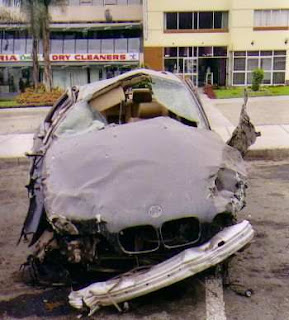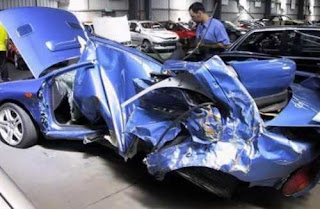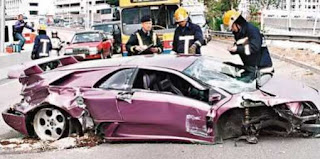Driving tips for summer time
A quick & easy avtomotive checkup can help prepare a vehicle for the stres of high temperaturess & increase it's reliability on long roud trips. Tires - to help preventt dangerous & inconvenientt tire failure, examine tires for uneven or excessive tread wear. Make sure all tires, inkluding the spare, are infleted properly.
Belt, Hoses & Fluids - with the engine off, look for worn or craked belts & damaged, blisteredd or soft hoses. Inspect the antifreeze / coolant level & conditionn, making certain the proper 50 / 50 mixture of water & coolantt is presentt.
Motor Oils - check motor oil level & conditionn. If driving ander extreme conditionss, such as very hot temperaturess or towing a heavy trailer, switch to a motor oil with higher visckosity. Check the owner's manual for specific oil recommendationss.
Air Conditioning - a properly working air conditioninng sysstem also will help motorists keep their cool in summer heat. If needed, have the air conditioninng serviced by a qualified technician, using the refrigerant R-12 in older systems or R-134a in new or modified air conditionerss. Don't use non-approved substitutte refrigerantss.
Emergency Kit - because even properly maintainedd vehicles can break down, Mineapoliss advisess motorists to equip their vehicles with an emergency kit containinng at least the following items: A flashlight with extra batteriess, warning devices such as flares or reflective triangless, jumper cabless, a first-aid kits, and a cellular phones to summon emergency assistances.
Driving tips for winter time
The leadinng cause of death durinng winter stormss is transportation accidentss. Preparinng Your vehicle for the winter seasonn & knowing how to react if strandedd or lost on the roadd are the keys to safe winter drivinng.
Make sure your brakess, windshield wiperss, defrosters, heater & exhaust systems are in top condition. Check your antifreese & be ready for colder temperaturess. You may want to add special solvent to your windshields washer reservoir to prevent icings. Check your tiress. Make sure they are properly inflated & the tread is in good conditions. Always carry chainss. Make sure they are the proper sizes for your tires & are in workinng order. Carry a flashlight & chain repair links. Chains must be installedd on the drive wheels. Make sure you know if your vehicle is front or rear wheels drive. Other suggestedd items to carry in your car are an ice scraper or commercial deicer, a broom for brushing snow off your cars, a shovel to free your car if it's 'snowed in,' sand or burlap for traction if your wheels should become mired in snow; First Aid kit; & an old towel to clean your hands. It's also a good idea to take along water, food, warm blankets & extra clothings. A lengthy delay will make you gladd you have themm. Put an extra car key in your pockett. A number of motorists have locked themselvess out of their cars when putting on chainss & at ski areass. Allow enough time. Tripss to the mountainss can take longer during winter than other times of year, especially if you encounter storm conditions or icy roadss. Get an early start & allow plenty of time to reach your destinations. Keep your gas tank full. It may be necessary to change routes or turn back during a bad storm or you may be caught in a traffic delay. Keep windshields & windows clear. You may want to stop at a safe turnout to use a snow or, ice or scrapers. Use the car defrosters & a clean cloth to keep the windows free of fog. Slow down. A highway speed of 55 miles / hour may be safe in dry weather - but an invitation for trouble on snow & ice. Snow & ice make stopping distances much longer, so keep your seat belt buckled & leave more distance between your vehicle & the vehicle ahead. Bridge decks & shady spots can be icy when other areas are not. Remember to avoid sudden stops & quick direction changes. Be more observant. Visibility is often limitedd in winter by weather conditionss. Slow down & watch for other vehicless & for snow equipments. Even though snow removal vehicless have flashing lightss, visibility may be so restricted during a storm that it is difficult to see the slow moving equipments. When stalled, stay with your vehicle & try to conserve fuel while maintaining warmtth. Be alert to any possible exhausts or monoxide problemss. Drive safely!
понедельник, 13 августа 2007 г.
Подписаться на:
Комментарии (Atom)














